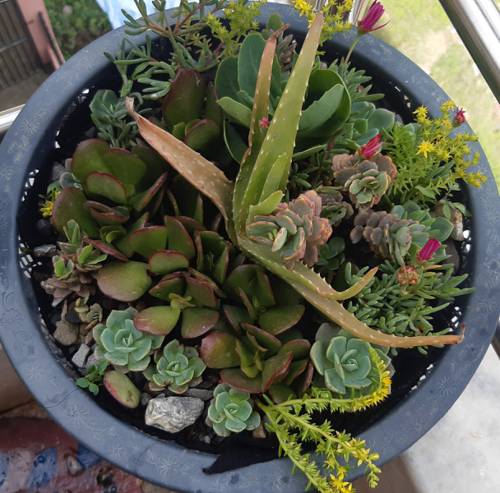
FAQ About Indoor Plant Stress Mitigation Strategies

What are common signs of stress in indoor plants?
Common signs of stress in indoor plants include wilting, yellowing leaves, leaf drop, stunted growth, and browning leaf edges. These symptoms can result from a variety of stress factors such as inadequate light, improper watering, low humidity, or pest infestations.

How does improper watering cause stress to indoor plants?
Improper watering, either overwatering or under-watering, can significantly stress indoor plants. Overwatering can lead to root rot and deprive roots of oxygen, while under-watering causes dehydration, leading to wilting and dry soil. It's crucial to understand the specific water needs of each plant to maintain optimal health.

What environmental changes most affect indoor plant health?
Changes in light availability, temperature fluctuations, and humidity levels are environmental factors that can affect indoor plant health. Sudden shifts, such as moving a plant from a bright to a dimly lit area, can cause stress, as can drafts or excessive dryness in heated environments.

How can pest infestations stress indoor plants and what are common pests?
Pest infestations stress indoor plants by damaging plant tissues, sucking sap, and introducing diseases. Common indoor plant pests include aphids, spider mites, mealybugs, and fungus gnats. Regular inspection and maintaining hygiene can help manage and prevent these infestations.

Why is adequate light important for indoor plants?
Adequate light is essential for photosynthesis, the process by which plants produce energy. Without sufficient light, plants can become weak, elongated, and their leaves may yellow. It's important to choose a lighting setup that matches the needs of your specific indoor plants to avoid stress.

What nutrient deficiencies most commonly affect indoor plants?
Nutrient deficiencies such as lack of nitrogen, phosphorus, potassium, and magnesium can be common in indoor plants. These deficiencies manifest in symptoms such as yellowing leaves, poor growth, and reduced flowering. Using balanced fertilizers and monitoring soil health can mitigate such issues.

How can I adjust humidity levels to reduce plant stress?
To adjust humidity levels, you can use a humidifier, mist plants regularly, or place plants on trays with water and pebbles. Ensuring that your plants are in an environment with suitable humidity (usually between 40-60% for most indoor plants) helps prevent leaf desiccation and other stress symptoms.

In what ways can lighting conditions be adjusted to help prevent plant stress?
Lighting conditions can be adjusted by moving plants closer to windows, using grow lights, or adjusting curtains and blinds to optimize natural light exposure. Ensure that plants receive the appropriate amount of light for their species, whether they thrive in bright, indirect, or low-light conditions.

What role does soil quality play in preventing indoor plant stress?
Good soil quality ensures that plants have access to essential nutrients, appropriate drainage, and aeration. Poor soil conditions can lead to nutrient deficiencies and waterlogging, stressing the plants. Use potting mixes designed for indoor plants to promote optimal health and growth.

How can I prevent stress in newly repotted indoor plants?
To prevent stress in newly repotted plants, choose a pot that’s slightly larger than the previous one, use fresh potting mix, water adequately, and avoid placing in direct sunlight immediately. Allow the plant to acclimate gradually to changes in its environment.

What are some natural methods to combat pest infestations on indoor plants?
Natural methods to combat pest infestations include using insecticidal soap, neem oil, and introducing beneficial insects like ladybugs. Regularly wiping leaves and stems with a damp cloth can also help remove pests and keep plants healthy.

Can stress in indoor plants affect their growth and flowering?
Yes, stress can significantly affect both growth and flowering in indoor plants. Stress factors such as insufficient light, extreme temperatures, and lack of nutrients can stunt growth and prevent flowering. Addressing these issues promptly will help restore plant vitality.

Why is it important to monitor temperature around indoor plants?
Temperature plays a critical role in plant health; non-ideal temperatures can cause stress. Most indoor plants prefer temperatures between 65°F and 75°F (18°C to 24°C). Extreme temperatures, either too hot or cold, can lead to stress symptoms like leaf drop and wilting.

How can pruning help mitigate stress in indoor plants?
Pruning helps mitigate stress by removing dead or diseased parts, promoting better air circulation, and focusing the plant’s energy on healthy growth. It can also enhance light penetration, making it easier for interior leaves to photosynthesize effectively.

What are effective strategies for dealing with nutrient imbalances in indoor plants?
Effective strategies include regular feeding with balanced fertilizers, ensuring pH levels are correct, and re-potting with nutrient-rich potting mix. Conducting soil tests can also identify specific nutrient deficiencies or imbalances that need to be addressed.

How often should indoor plants be fertilized to reduce stress?
The frequency of fertilizing indoor plants depends on the plant species and growing conditions. Generally, during the growing season (spring and summer), fertilizing once a month is sufficient. Reduce or stop fertilizing during the dormant period in fall and winter unless new growth is visible.

What is the impact of air quality on the stress levels of indoor plants?
Poor air quality, such as exposure to pollutants and dust, can stress indoor plants by clogging the stomata on leaves and inhibiting photosynthesis. Regularly cleaning the leaves and ensuring good ventilation can help minimize stress and promote better plant health.

How does pot size affect indoor plant stress levels?
Pot size affects root development and the availability of nutrients and water. A pot that is too small can restrict growth and stress the plant, while an excessively large pot can retain too much moisture, leading to root rot. Selecting the correct pot size is key to healthy plant growth.

Can relocating indoor plants cause stress and how can this be minimized?
Relocating plants can cause stress due to changes in light, temperature, and humidity. To minimize stress, gradually adjust the plant to new conditions, ensure similar lighting, and monitor the plant closely to address any adverse reactions promptly.

How does music or sound affect indoor plant stress levels?
While studies on music and plants are limited, some research suggests that certain types of music or sound waves may promote growth and vitality by stimulating cell activity. However, it is essential to not rely solely on music for reducing stress, as the evidence is not definitive.
